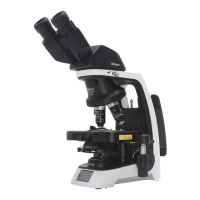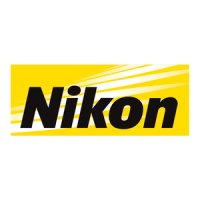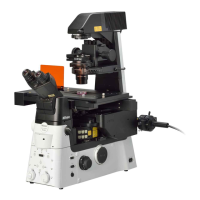36
Troubles Causes Corrective Measures
Poor image quality (low
resolution, contrast too
low or too high)
Condenser position too low. Position the condenser slightly
lower than the upper limit.
(P. 19)
Coverglass too thick or thin. Use a coverglass of the
specified thickness (0.17 mm).
No coverglass attached to the
slide.
Slide upside down. Turn over the slide so that the
coverglass faces up.
No immersion oil used on the
front lens of the oil-immersion
objective.
Apply Nikon immersion oil to
the objective. (P. 22)
Air bubbles in immersion oil. Remove bubbles. (P. 22)
Clean the objective. (P. 40)
Nikon immersion oil is not used
for oil-immersion observation.
Aperture diaphragm opened or
closed too far.
Close or open properly.
(P. 19, 20)
Immersion oil found on dry type
objective (especially 40x and
60x objective).
Correction ring on the objective
not adjusted (only for the
objective with the correction
ring).
Adust the ring according to the
cover glass thickness.
Dust or dirt on the eyepieces,
objective or condenser.
Clean them. (P. 40)
No-cover-glass-objective is
used for the specimen with the
cover glass.
Use the ordinary obective for
cover glassed specimen.
The ordinary objective is used
for the specimen without the
cover glass.
Use the no-cover-glass-
objective.
Note: Indication on the
objective.
160/0.17: For cover
glassed
specimen.
160/0: For no cover
glassed
specimen.
160/- : For both cover
glassed and no
cover glassed
specimen.
